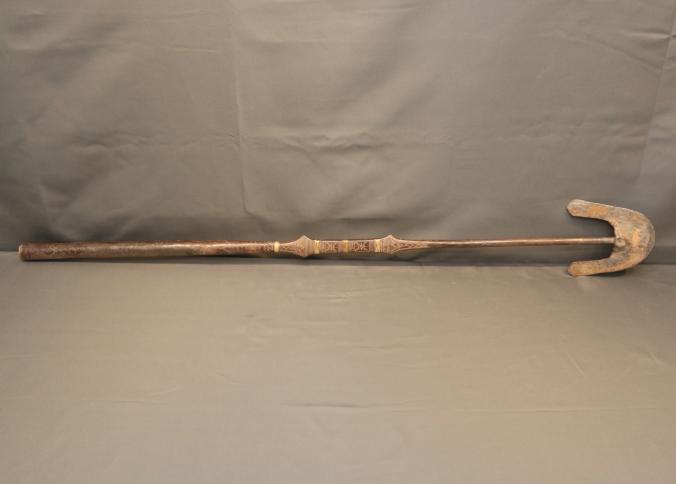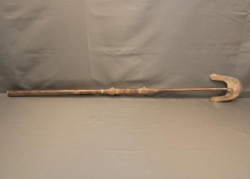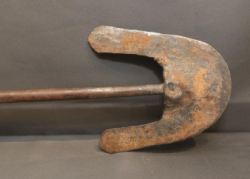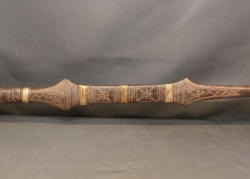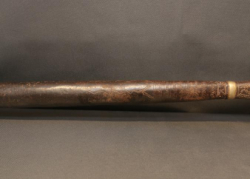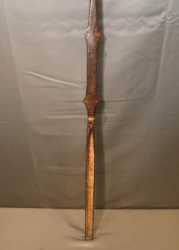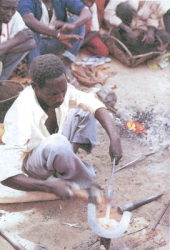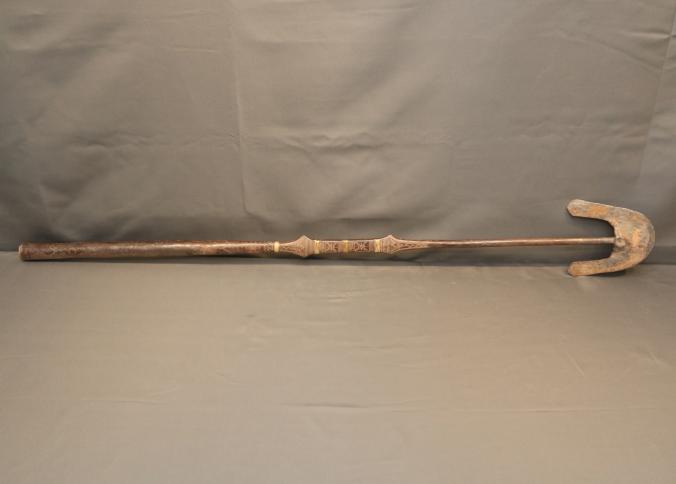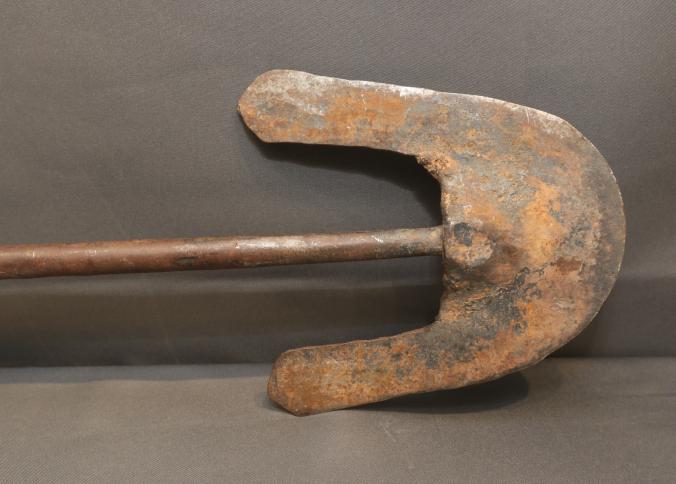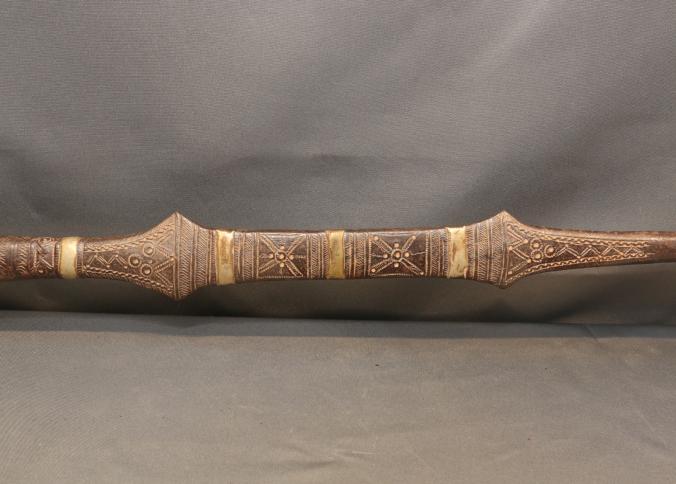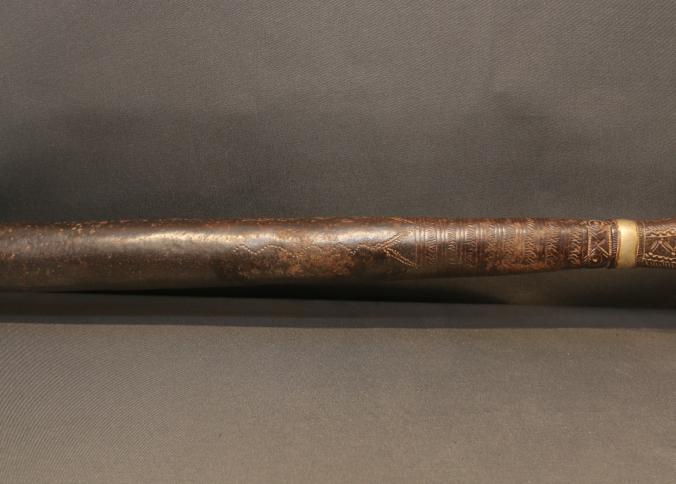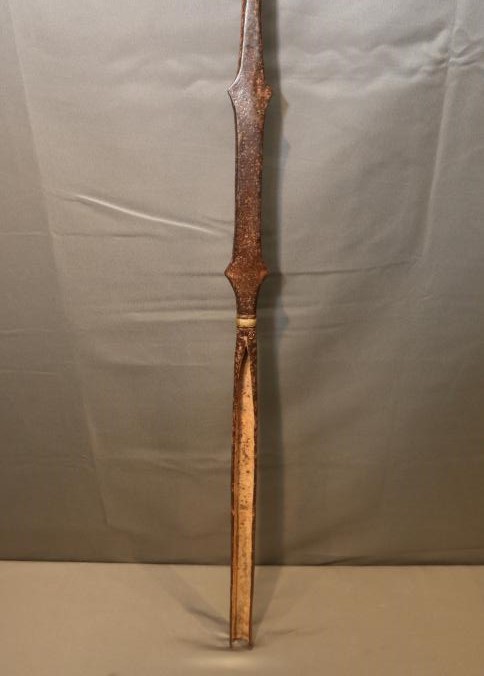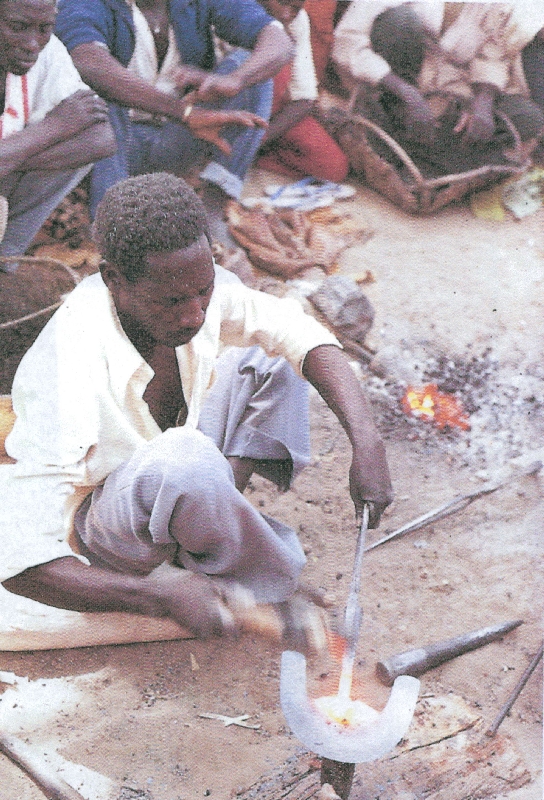Items located in Pleasant Valley, NY. Items include wall plaque from the royal palace, Edo people, Benin; rare masterwork ceremonial ax, Sapo-Sapo/Songye people, Congo; prestige neck ring, Kirdi or Fali people, Nigeria; West African anklet and bracelet bells; late 19thC gold weights, Akan people; and more.
AFRICAN ART COLLECTION OF MARY SUE AND PAUL PETER ROSEN
Mary Sue and Paul Peter Rosen have collected African art for over thirty years, making nine trips to Africa to study the art in its cultural setting. The Rosens have published three African art books, curated more than ten exhibitions from their collection, and have given public lectures about African art and culture. They have donated art from their collection to various institutions including the Newark Museum, Temple University in Philadelphia, the SMA Fathers African Art Museum in Tenafly, New Jersey, and the African American Research Library in Fort Lauderdale, Florida.
Payment is due by Monday, June 3 at 1PM.
Pickup in Pleasant Valley, NY must be completed by Monday, June 3 at 3PM.
All lots sold as is, where is. There is a 15% Buyers Premium for all lots purchased. Payment methods include cash, MC, Visa, Discover or good check. You can make credit card payment online by going to your Member Area and selecting your invoice.
*NOTE* Shipping is available on all items.
AFRICAN ART COLLECTION OF MARY SUE AND PAUL PETER ROSEN
Mary Sue and Paul Peter Rosen have collected African art for over thirty years, making nine trips to Africa to study the art in its cultural setting. The Rosens have published three African art books, curated more than ten exhibitions from their collection, and have given public lectures about African art and culture. They have donated art from their collection to various institutions including the Newark Museum, Temple University in Philadelphia, the SMA Fathers African Art Museum in Tenafly, New Jersey, and the African American Research Library in Fort Lauderdale, Florida.
Payment is due by Monday, June 3 at 1PM.
Pickup in Pleasant Valley, NY must be completed by Monday, June 3 at 3PM.
All lots sold as is, where is. There is a 15% Buyers Premium for all lots purchased. Payment methods include cash, MC, Visa, Discover or good check. You can make credit card payment online by going to your Member Area and selecting your invoice.
*NOTE* Shipping is available on all items.
Auction Info
Items located in Pleasant Valley, NY. Items include wall plaque from the royal palace, Edo people, Benin; rare masterwork ceremonial ax, Sapo-Sapo/Songye people, Congo; prestige neck ring, Kirdi or Fali people, Nigeria; West African anklet and bracelet bells; late 19thC gold weights, Akan people; and more.
AFRICAN ART COLLECTION OF MARY SUE AND PAUL PETER ROSEN
Mary Sue and Paul Peter Rosen have collected African art for over thirty years, making nine trips to Africa to study the art in its cultural setting. The Rosens have published three African art books, curated more than ten exhibitions from their collection, and have given public lectures about African art and culture. They have donated art from their collection to various institutions including the Newark Museum, Temple University in Philadelphia, the SMA Fathers African Art Museum in Tenafly, New Jersey, and the African American Research Library in Fort Lauderdale, Florida.
Payment is due by Monday, June 3 at 1PM.
Pickup in Pleasant Valley, NY must be completed by Monday, June 3 at 3PM.
All lots sold as is, where is. There is a 15% Buyers Premium for all lots purchased. Payment methods include cash, MC, Visa, Discover or good check. You can make credit card payment online by going to your Member Area and selecting your invoice.
*NOTE* Shipping is available on all items.
AFRICAN ART COLLECTION OF MARY SUE AND PAUL PETER ROSEN
Mary Sue and Paul Peter Rosen have collected African art for over thirty years, making nine trips to Africa to study the art in its cultural setting. The Rosens have published three African art books, curated more than ten exhibitions from their collection, and have given public lectures about African art and culture. They have donated art from their collection to various institutions including the Newark Museum, Temple University in Philadelphia, the SMA Fathers African Art Museum in Tenafly, New Jersey, and the African American Research Library in Fort Lauderdale, Florida.
Payment is due by Monday, June 3 at 1PM.
Pickup in Pleasant Valley, NY must be completed by Monday, June 3 at 3PM.
All lots sold as is, where is. There is a 15% Buyers Premium for all lots purchased. Payment methods include cash, MC, Visa, Discover or good check. You can make credit card payment online by going to your Member Area and selecting your invoice.
*NOTE* Shipping is available on all items.
Categories:
ILER (HILAIRE) HOE. Songhai people, Niger and Mali. Almost all African hoes consist of a blade attached to a short wooden handle. The shapes and weights of the blades are very varied, but the handles tend to be similar. This requires that farmers, the majority of whom are women, work in a stooped position. The iler (hilaire) hoe of the Songhai people is one of the few exceptions to this rule. It not only has a long handle, but the handle is made of iron that is forged to a U-shaped blade (see picture). A short wooden pole was inserted into the socket at the end of the handle to make the relatively heavy hoe easier to handle. Obviously, this type of hoe would be a prized possession, which accounts for the prominent decorations which make this an exceptional example. The decorations consist of punched and incised designs midshaft and three inset bright brass bands. Punched designs on the handle are partly worn away from use. Iron, brass. H49in.
More Details
ILER (HILAIRE) HOE. Songhai people, Niger and Mali. Almost all African hoes consist of a blade attached to a short wooden handle. The shapes and weights of the blades are very varied, but the handles tend to be similar. This requires that farmers, the majority of whom are women, work in a stooped position. The iler (hilaire) hoe of the Songhai people is one of the few exceptions to this rule. It not only has a long handle, but the handle is made of iron that is forged to a U-shaped blade (see picture). A short wooden pole was inserted into the socket at the end of the handle to make the relatively heavy hoe easier to handle. Obviously, this type of hoe would be a prized possession, which accounts for the prominent decorations which make this an exceptional example. The decorations consist of punched and incised designs midshaft and three inset bright brass bands. Punched designs on the handle are partly worn away from use. Iron, brass. H49in.
High Bid:
$80.00 – bullish13
Auction Type: One Lot
Quantity: 1
Bidding has closed on this lot

